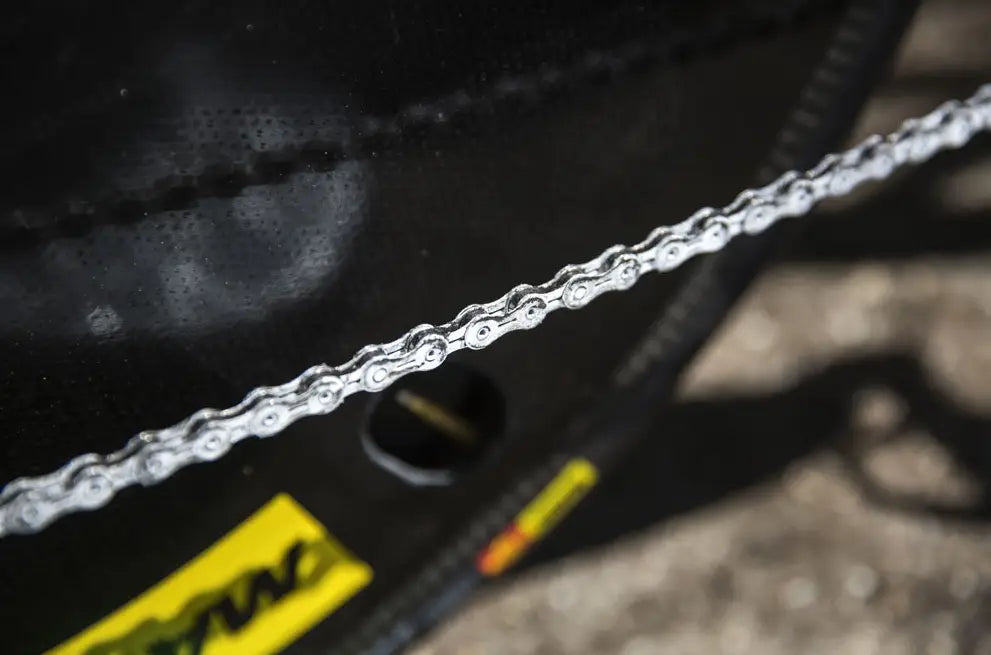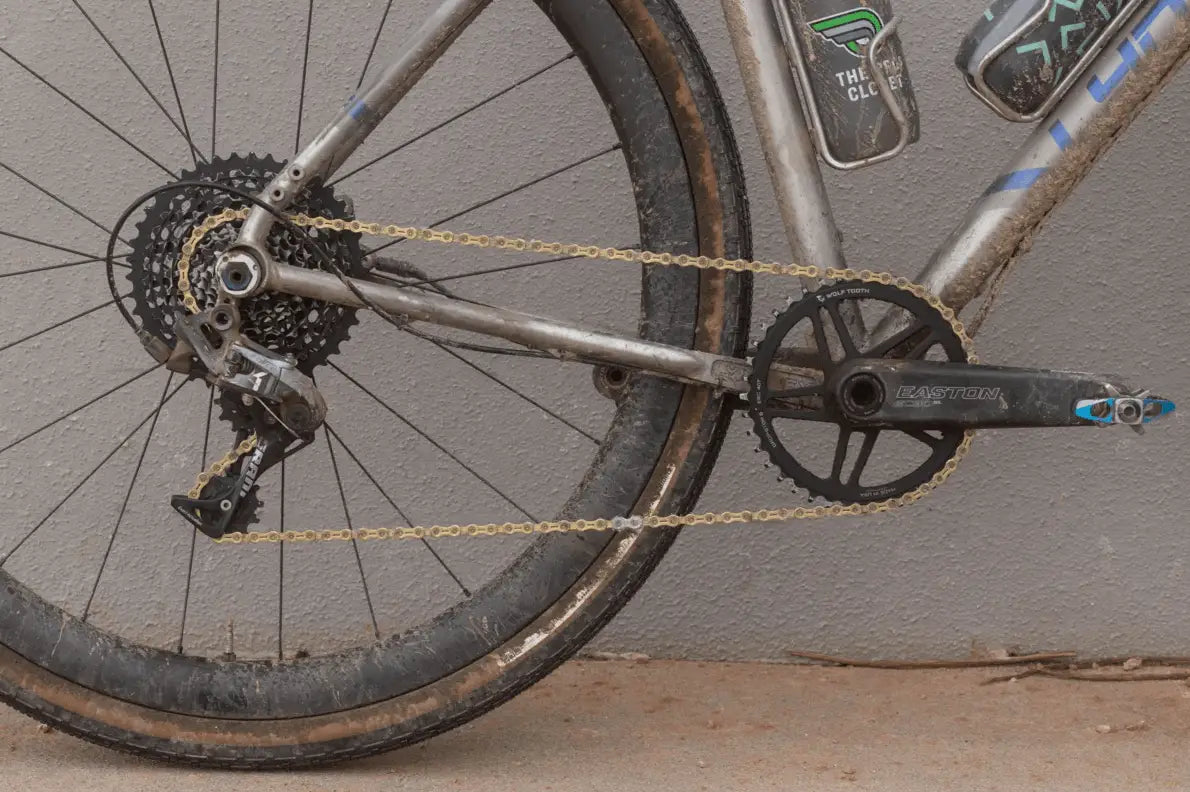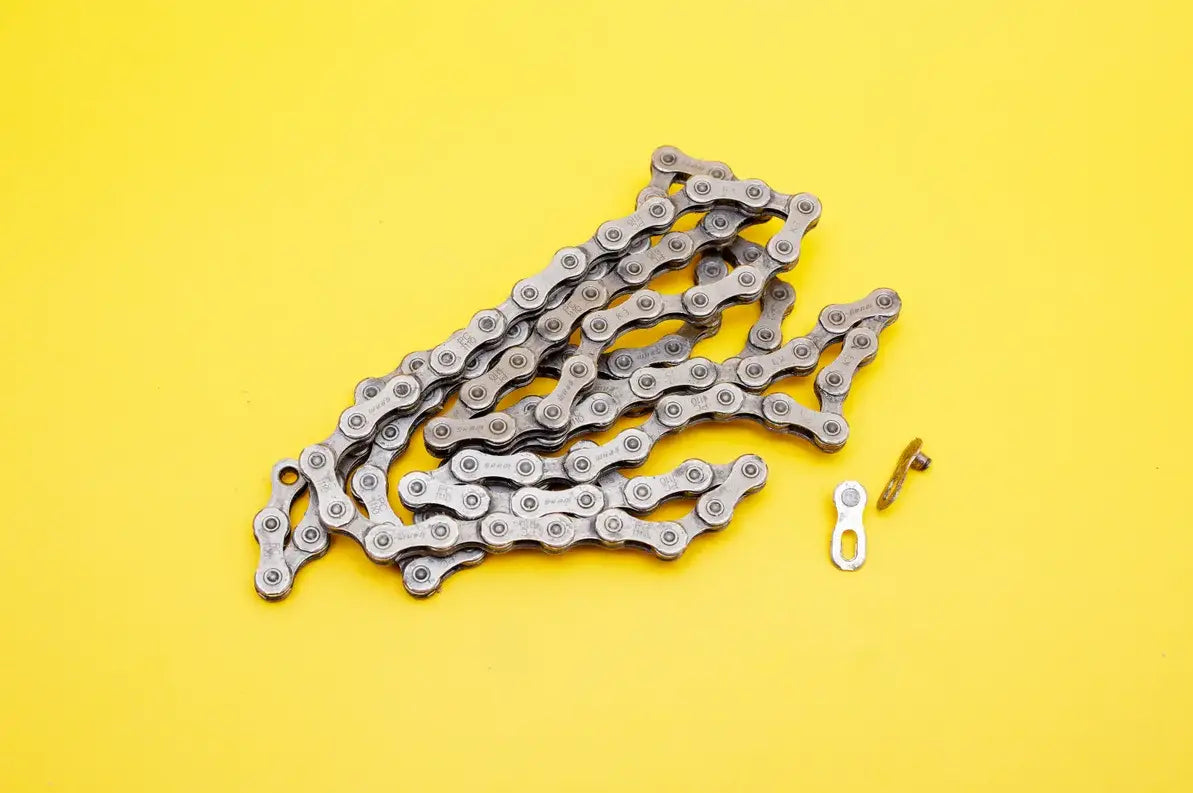Congratulations on entering the glorious world of waxed chains! Prepare for lower friction and a clean drivetrain. Say goodbye to the dreaded Cat-5 tattoo on your calf
Before we start celebrating eternal drivetrain bliss, there are a few things you need to re-learn from using traditional oil based lubricants though. In this article I will try to walk through the most important steps to keep your chain working with maximum efficiency.

Before the ride
At Kogel we have done the hard part of chain waxing for you, which is removing the factory grease. It is a multi step process which requires harsh chemicals and hydrosonic cleaners. Once the chain is stripped of any oil based lubricants, it is ready to accept the hot wax to fill all the gaps between the plates and rollers.
The most important thing to remember is that wax and lubes do not mix. Applying a wet lube on top of a waxed chain will give you the worst of both worlds: A sticky mess that attracts dirt and causes high friction and chain wear. Just avoid it. You’re a waxed chain guy/girl now! Your chain is not broken after applying wet lube, but will have to go through the full stripping process again in order to accept a new coat of wax.
Installation
Before installing your new waxed chain, it is important to fully clean your drivetrain from any grease. Remember that wax and grease do not get along. If your drivetrain is used, you need to clean it thoroughly and even if your bike is brand new, chances are the factory grease on the stock chain has contaminated your cassette and chain rings.
Ideally you put your cassette and chain rings through a session in the ultrasonic cleaner, but if you don’t have access to one, a bottle of clean streak and some elbow grease will work wonders. Just make sure to remove all cogs from your bike for easy access.
Maintenance
Your pre waxed chain is good for 200 to 300 miles of riding in clean conditions. Clean mostly means dry conditions, since dust does not affect durability as much as you are used to with a wet lube. This is the beauty of a waxed chain: the lubricants are dry at room temperature, which means dirt doesn’t stick to it. Riding in wet conditions will allow dirt and water to enter the chain and shorten the lifespan of the lubricant.
Between rides, cleaning the chain is as easy as wiping the chain off with a rag to remove any dirt. You could use a bike wipe too, if that is your preference.
If you wish to top off your chain for multiple riding days, you can do so with a wax based drip lube. At this moment, Kogel does not offer such a product but we had great success with Silca Super Secret, Squirt or Ceramicspeed UFO drip.
If you are looking to go 500 miles between reapplying the hot wax, these drip waxes are your friend. Remember that drip waxes are a wax particles and friction modifiers in a solution of a carrier that is (similar to) water. It takes 12 to 24 hours for these liquids to dry, which means you have to apply this the night before, not minutes before your ride. Remember the opening statement of this post? We have to learn a few new skills.

Reapplying the wax
Eventually you will get to the point where you need to dip your chain in hot wax in order to bring it back to full drivetrain bliss. The wax that sits inside the rollers and between the plates will wear off over time and drip wax does not have the full penetrating power of a hot wax.
You will need a wax heater, which can be as simple as a small crock pot, and some hot wax. Kogel chains are prepped with Molten Speed Wax, but most of the other wax products available for bicycles will do a great job. My experience is that the difference between wax and wet lube is huge, but the difference between the high quality wax products is marginal.
A single block of wax will be good for seven or eight dippings if your chain is not too contaminated. You will notice the color of the wax change or dirt sit at the bottom of your pot once it is ready to be exchanged. After the initial melting, it is perfectly OK to let the wax cool down in your heater for next time.
Just turn on your pot, let the wax melt and drop in your chain. Pro tip: put your chain on top of the cold wax while you heat up your pot. Go take a shower and come back to find your chain ready. Swish the chain around in the hot wax a few times for good measure and maximum penetration.
Now hang your chain to dry. Once the chain is back at room temperature and everything is dry to the touch, your wax job is finished. You will notice that your chain feels very stiff now. We need to break up the wax to prevent the chain from jumping around on the cogs in the first couple of pedal revolutions. The simplest way to do this is to take a piece of PVC pipe or a broom stick and wrap the chain around it in both directions to make sure every link has articulated.
After this, you can give the chain a good brushing with a hard synthetic brush to clean off any wax flakes from the outside of the plates.
Reinstall your chain on the bike. Ride. Repeat.

Drivetrain longevity
Because wax is dry, it does not attract any dirt the way a traditional chain lube does. Imagine your good old chain looking fresh and clean at the beginning of your ride and all black at the end. This is because the oil based lube picked up dirt from the trail or road and this mixture of lube and sand is now effectively a grinding paste, eating away at your chain, chain rings and cassette.
Since a dry wax does not attract as much dirt, your entire drivetrain will last significantly longer. Good to know in the age of $500 cassettes and $800 chainrings with integrated power meter! If you want to geek out on anything chain wear related, visit https://zerofrictioncycling.com.au/ they are the worlds number one independent test lab drivetrain testing and their website has a ton of information.
Using their data, this website calculates the cost to run of your drivetrain using different lubricants. Just put in your drive train, annual mileage and lubricant of choice and watch the hot wax lubes whoop the wet lubes in every single case.

